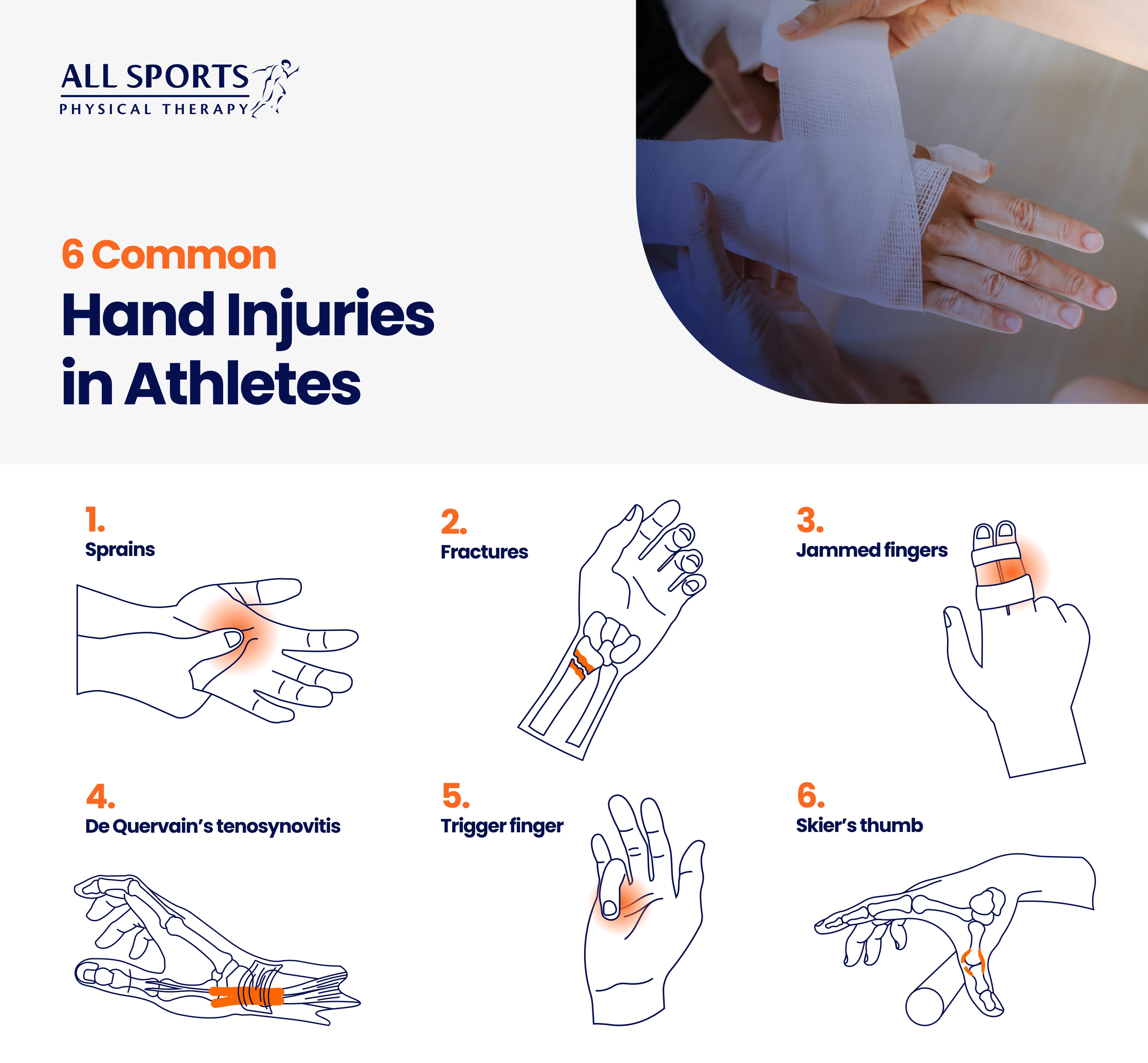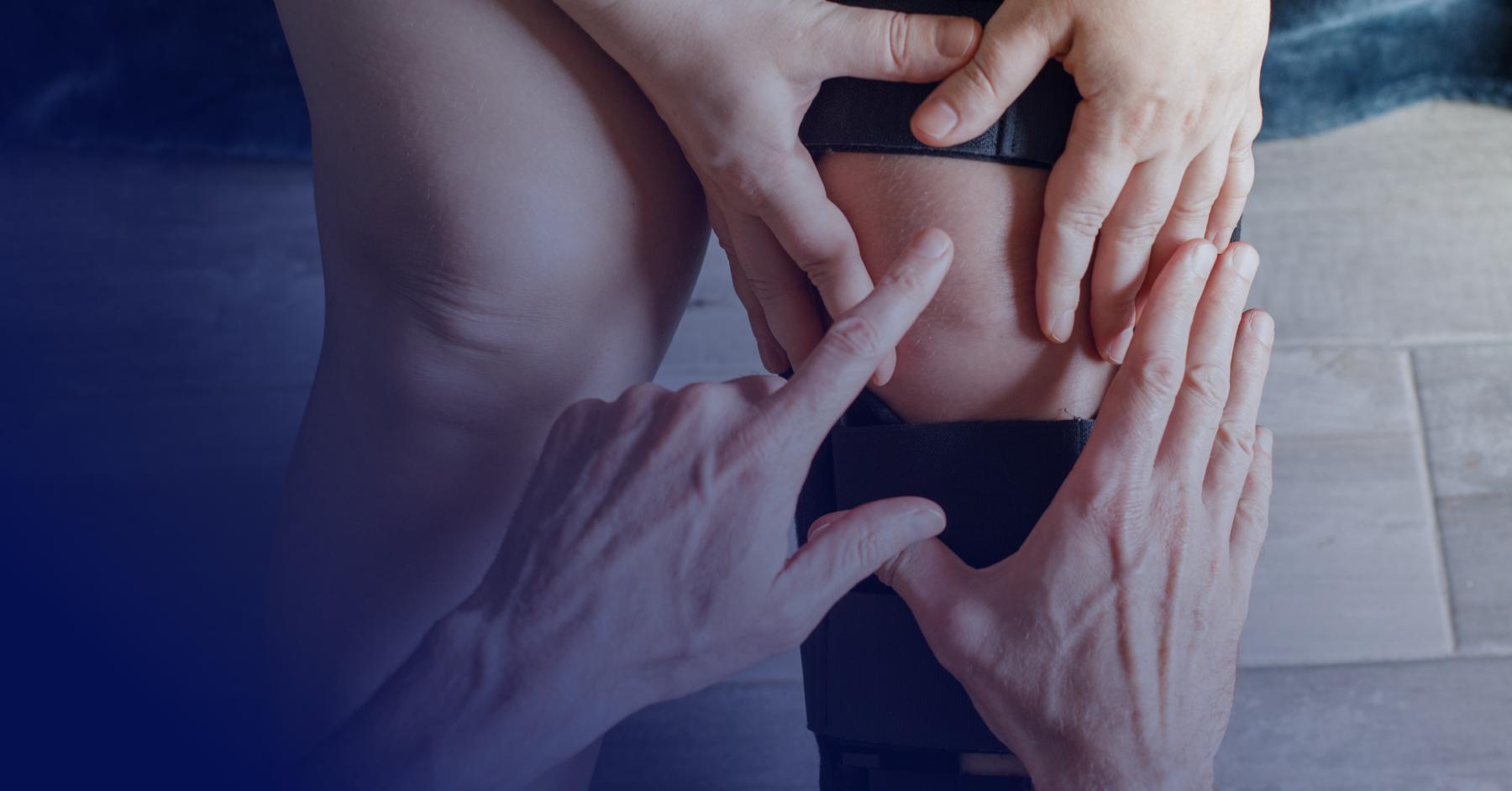6 Common Hand Injuries in Athletes
Hand Injuries

Hand and wrist injuries are common among athletes, but there are ways to reduce your risk.
So many sports depend on having strong, flexible hands, such as baseball, golf, tennis, basketball, and weightlifting. As a result, athletes in these sports stand a greater chance of injuries to the hand and wrist. In fact, a study found that 25% of all sports-related injuries occur in the hand and wrist.
If you’ve recently suffered from a hand injury, this article will help you identify the cause of your pain and understand what your treatment options are so you can get back to playing the sport you love as soon as possible.
6 common hand and wrist injuries in athletes

Athletes who use their hands are most prone to injuries to the hand and wrist due to overuse. But even if you don’t play a sport with your hands, you could injure your hand and wrist in other ways, such as a bad fall or an accident. Here are the six most common hand injuries athletes experience:
1. Sprains
Sprains to the delicate tendons of the hand and wrist can happen from overuse, such as repeatedly swinging a tennis racket or golf club, or when you try to catch a basketball, and your fingers and wrist bend out of their normal range of motion. Pain and swelling in the wrist or fingers indicate a sprain. A short period of rest can usually resolve a mild sprain, but more serious sprains often require medical attention.
2. Fractures
Fractures to the bones of the fingers and wrist can happen if your hands take a constant pounding, as with boxing. Hockey players can injure their wrists when they break a fall on the ice. Similar to sprains, broken bones cause pain and swelling. However, the pain associated with a fracture lingers longer and requires medical treatment.
3. Jammed fingers
A finger can get “jammed” when you try to catch a hard-thrown ball, such as in volleyball, basketball, and football, with your bare hand. The injured finger becomes difficult to move, and you’ll notice pain, swelling, and redness along the top of the finger. If you experience this injury, never try to “realign” the finger. Instead, consult with a physical therapist on the best treatment options.
4. De Quervain’s tenosynovitis
An overuse injury, De Quervain’s tenosynovitis typically strikes golfers, baseball players, and tennis enthusiasts. The repetitive action of throwing or swinging a club or racket can inflame the tendon along the thumb side of the wrist, resulting in pain, tenderness, and swelling in that area. The pain worsens when you try to move your wrist or thumb. The best course of action is to rest and see a specialist. Often, a cortisone injection is recommended.
5. Trigger finger
Trigger finger is similar to De Quervain’s tenosynovitis in that it’s an inflammation of the flexor tendon sheaths in the finger. But unlike De Quervain’s tenosynovitis, a trigger finger can occur in any finger, not just the thumb. Repeated hand motions, as in sports like tennis and golf, tend to cause trigger finger. As a result, the finger may become locked in one position and swell, and a bump may form at the top of your palm and the base of the finger. To give the tendon time to heal, you may wear a splint and have to avoid gripping and other actions that can cause pain. Steroid injections can also help reduce the pain. Surgery may be recommended if conservative methods fail to resolve the issue.
6. Skier’s thumb
Unlike overuse injuries, skier’s thumb is an impact injury occurring when you fall and severely sprain the ligaments in the base of your thumb. Skiers trying to break a bad fall are most susceptible to this injury, but any athlete who takes a bad tumble on their hand and thumb can experience it. With this condition, pain, swelling, and redness in the thumb area of the palm are common. Picking up objects may also be painful. If you suspect you have skier’s thumb, see a specialist for treatment.
Preventing hand and wrist injuries
Hand and wrist injuries can be prevented by taking precautions before you play. Keep these tips in mind:
- Get the right equipment. Wear hand and wrist guards to protect yourself from injury. Also, buy shoes with gripping soles to prevent falls.
- Warm up. Before you take to the playing field or court, warm up your muscles with stretching exercises. A simple one to try is to spread your fingers as far apart as you can, then relax. Repeat at least four times.
- Strengthen the wrist to avoid injuries. As part of your warm-up routine, you can do that by simply squeezing a tennis ball repetitively and constantly.
- Take a rest. Whatever sport you play, be sure to rest to allow your muscles to recover.
Let us give you a hand
At All Sports Physical Therapy, our therapists work with athletes to prevent injuries and up their game to the next level. With a customized physical therapy program, we’ll help you recover from injuries and avoid the next one. Contact us today for a consultation.



